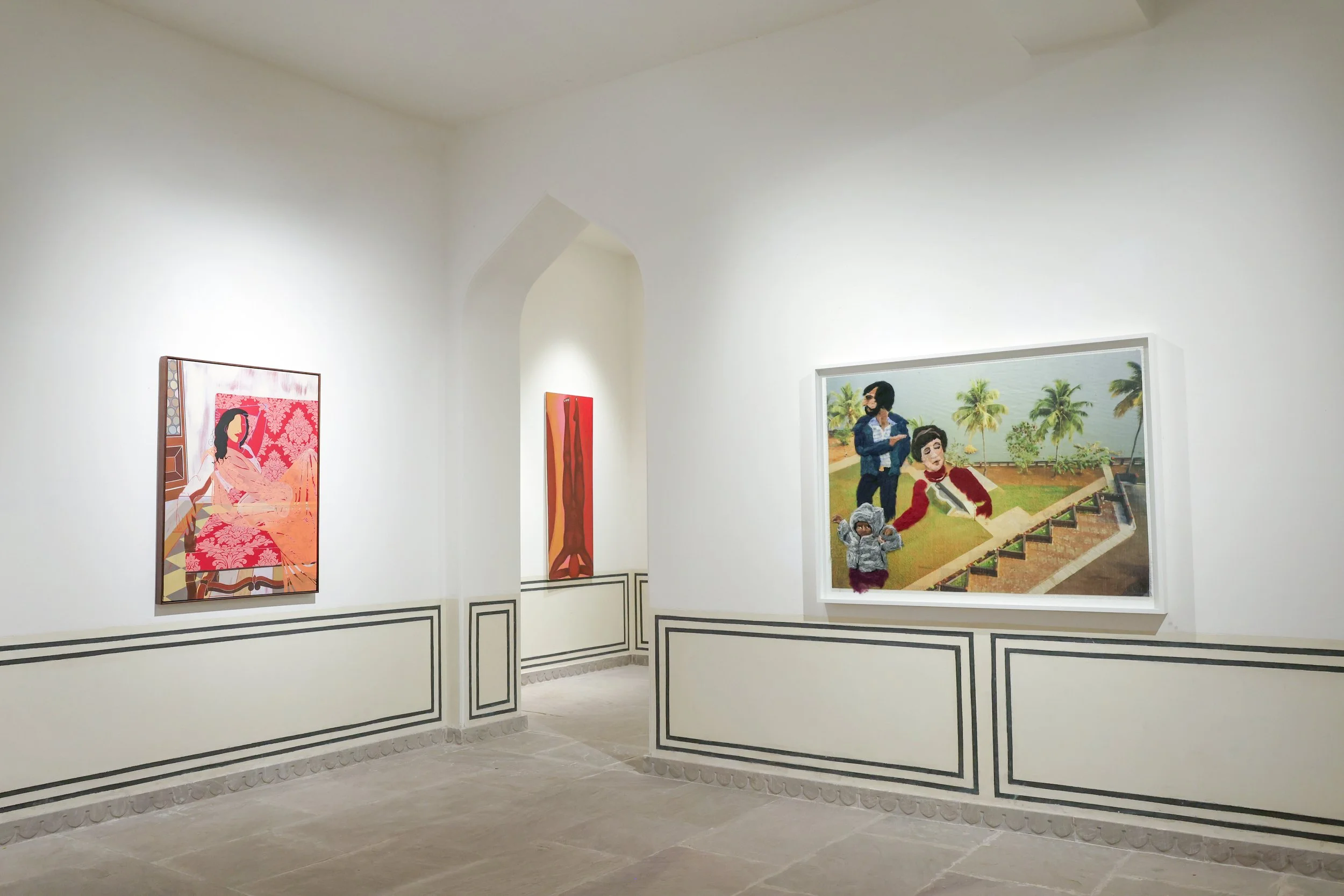On View
Fragility and Resilience
Ayesha Sultana
November 10, 2025 - January 5, 2026
Presented in collaboration with Ishara Art Foundation
Supported by Experimenter
Fragility and Resilience marks Ayesha Sultana’s first solo exhibition in Jaipur. Originally presented at the Ishara Art Foundation in Dubai in 2024, the show has been reimagined for Jaipur Centre for Art, where the works enter into a renewed dialogue with the building’s history.
The exhibition is an exploration of the delicate balance between the vulnerability and strength of our planet in the twenty-first century. The exhibition is designed to guide viewers through a journey of quiet reflection.
Previous Exhibitions
-

Adaptive Realms
Jaipur Centre of Art presents its first exhibition dedicated to miniature painting, an art form that has long been a mainstay in Jaipur’s artistic heritage.
-
Non-Residency
Presented by Raiiv Menon Contemporary, this group exhibition explores the contemporary aesthetics of the Indian diaspora and probes the cultural and aesthetic divide that arises when a people emigrates and resettles in an entirely different place.
Read more. -

Artists’ Cinema / Artist’s Cinema
A six-week programme of bold, poetic, and boundary-blurring films that celebrate cinema as both artistic expression and collective experience. Curated by Dr. Shwetal Ashvin Patel, the inaugural programme of art and film featured over 150 films from South Asia and beyond.
See more -

India in Dialogue: Tradition & Transformation
Marking the launch of Whitewall’s Spring Artist Issue, this composite survey show brings together a dynamic group of artists offering a wide-ranging view of the landscape of contemporary art in India today.
See more -

A New Way of Seeing
Curated by Peter Nagy, JCA’s inaugral exhibition brought together a diverse group of established Indian and international contemporary artists, that offered unique insights into the ways we perceive and engage with art.
See more

